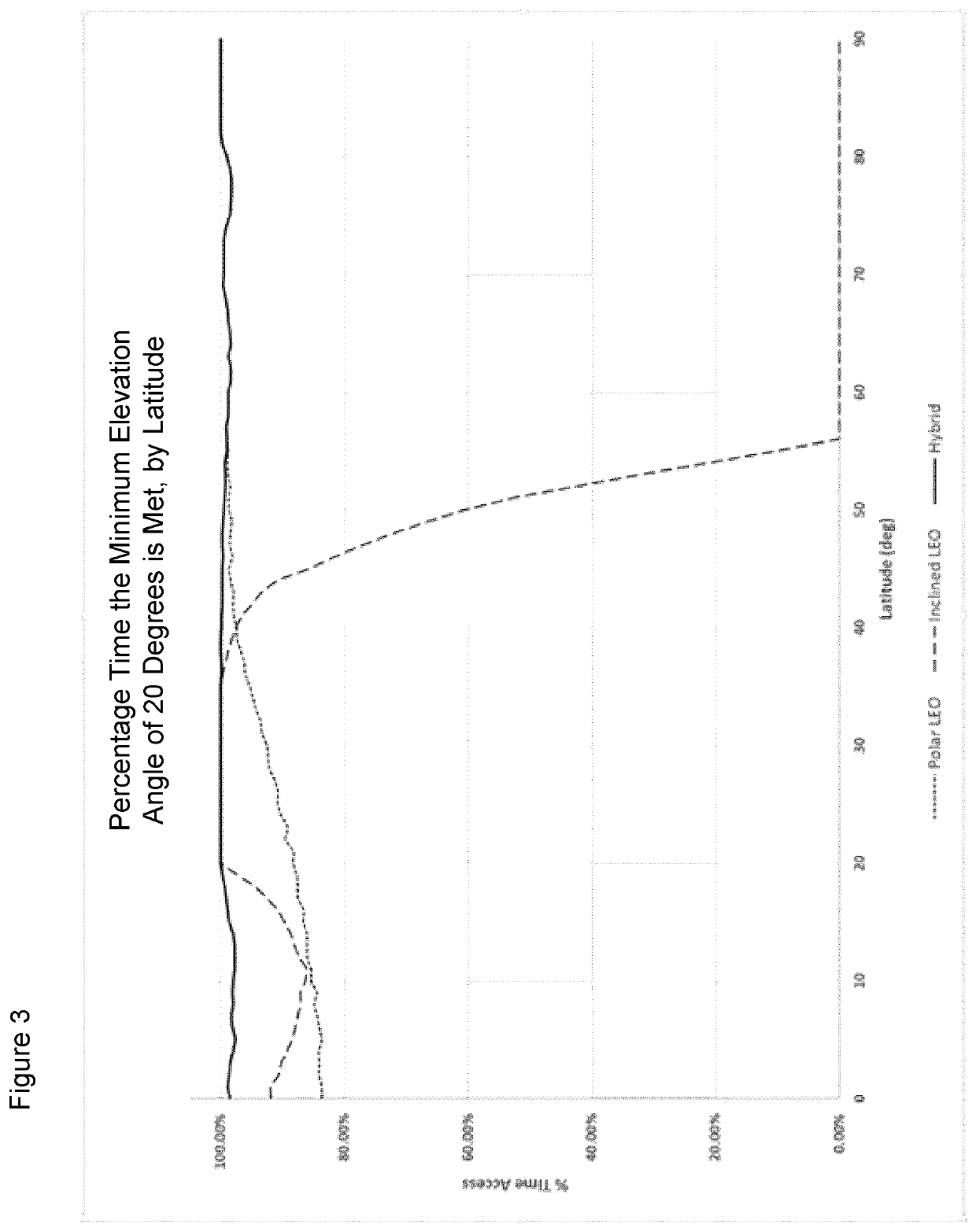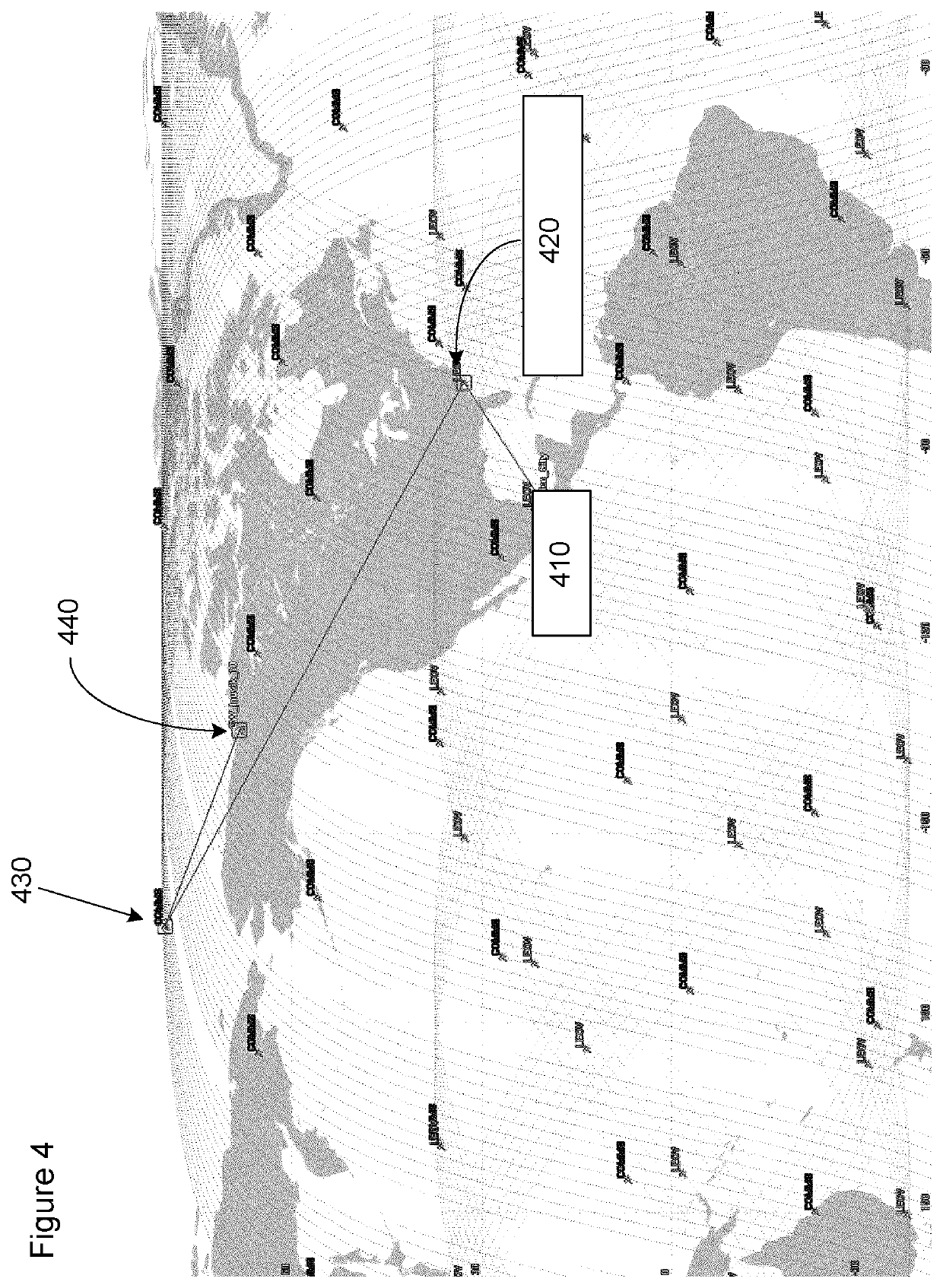Dual LEO satellite system and method for global coverage
a satellite system and satellite technology, applied in the field of satellite systems, can solve the problems of only getting orbit, poor coverage at higher latitudes, and high cos
- Summary
- Abstract
- Description
- Claims
- Application Information
AI Technical Summary
Benefits of technology
Problems solved by technology
Method used
Image
Examples
Embodiment Construction
[0035]The LEO hybrid constellation of the invention consists of two mutually-supporting constellations: a polar LEO constellation and an inclined LEO constellation. Complete global, broadband communication coverage with a minimum elevation angle of approximately 20 degrees can be provided with a total of 117 satellites, 72 in the polar LEO constellation and 45 in the inclined LEO constellation. Unlike other proposed LEO systems, initial service to any point on the globe can begin with a much smaller number of satellites; the completion of the polar constellation of 72 satellites, which provides global coverage with a minimum elevation angle of approximately 12 degrees. The subsequent launch of the inclined constellation of 45 satellites will increase the minimum elevation angle to approximately 20 degrees.
[0036]In the preferred embodiment the polar LEO constellation (see FIG. 1) is deployed to the following parameters:[0037]Constellation of 72 satellites, plus spares[0038]12 satelli...
PUM
 Login to View More
Login to View More Abstract
Description
Claims
Application Information
 Login to View More
Login to View More - R&D
- Intellectual Property
- Life Sciences
- Materials
- Tech Scout
- Unparalleled Data Quality
- Higher Quality Content
- 60% Fewer Hallucinations
Browse by: Latest US Patents, China's latest patents, Technical Efficacy Thesaurus, Application Domain, Technology Topic, Popular Technical Reports.
© 2025 PatSnap. All rights reserved.Legal|Privacy policy|Modern Slavery Act Transparency Statement|Sitemap|About US| Contact US: help@patsnap.com



